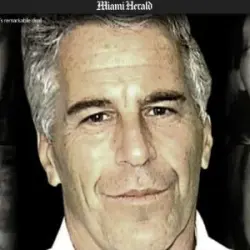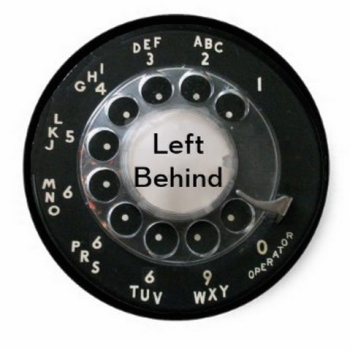More weeks-old but still-timely links.
• “Exorcists, Abusers, and When Catholic History is Horror.” Matthew J. Cressler’s essay is “part two of a three-part series comparing Catholic horror films and novels to actual horrors committed by the Catholic Church” at The Revealer.
This whole series is insightful but also very, very grim. The core of Cressler’s piece involves stories of horrific abuse from priests at Catholic schools here in Philly: “This is where I want to pause and take a breath, on the edge of the abyss. What these women told archdiocesan officials was deeply upsetting. It was disgusting. It was also frighteningly familiar for anyone who has seen a Catholic horror movie. …”
These stories involve people who went to school with people I know. And they were covered up — for decades — by the monsignor who presided over the confirmation of my own relatives.
The full extent of this real-life horror wasn’t publicly known until the release of a 2018 Grand Jury Report compiled by Pennsylvania Attorney General Josh Shapiro. That report prompted other victims to come forward to testify — more than 1,800 and counting, according to Shapiro, whose office has since been investigating those crimes.
This has prompted right-wing culture-warrior Bill Donohue of the “Catholic League” to weigh in on Pennsylvania’s governor’s race, which pits Democratic nominee Shapiro against Republican candidate Doug Mastriano — an enthusiastic antisemite and conspiracy theorist who promotes the Big Lie, QAnon-sense, white-nationalist replacement theory, and the theocratic lunacy of NAR and Reconstructionism.
Donohue is a self-styled defender of Catholicism. That could have meant that he would be hailing Josh Shapiro as a hero and an invaluable ally for taking the side of tens of thousands of Pennsylvania Catholics who had been the victims of horrific abuse. That’s what it should mean, but that’s not how Donohue works. As Hemant Mehta writes, for Donohue, Shapiro’s advocacy on behalf of those tens of thousands of Catholic Pennsylvanians and their families makes him an enemy of Catholicism because of his efforts to prosecute the hundreds of priests who tormented children.
The fact that this inverted morality allows him to openly support a Nazi-adjacent white-/Christian-nationalist like Mastriano is, for Donohue, just an added benefit.
• Speaking of creepy, power-mad abusers and Nazi-adjacent white-/Christian-nationalists … “Oath Keepers Leader Stewart Rhodes’ Children Speak.”
This is a disturbing read but also, in some ways, an inspiring one. These kids are survivors who are coming to understand what was done to them and who they can become despite that.
• “Anyone who wants to understand the modern politics of the Christian right must understand Francis Schaeffer,” James Risen writes for the Intercept:
Schaeffer’s little-understood impact on the American right today goes far beyond the fight over abortion: It is Schaeffer’s worldview that now dominates American right-wing ideology. He is largely responsible for the way in which the American right has embraced a Christian nationalist worldview that holds to moral absolutes and a belief that church and state should not remain separate.
Schaeffer’s impact is not “little-understood” by everyone, of course — certainly not by his son Frank, who has since written a novel and a memoir about his father’s disastrous influence and has committed the rest of his life to a loud, cranky penance for his participation in it. But for most Intercept readers — and for most of those outside of the white evangelical backlash to “the 1960s” [wink wink] that Schaeffer helped to define and refine — Risen provides a short, capable introduction both to the depth of Francis Schaeffer’s influence and to the shallowness of his “ideas.” (Schaeffer was the embodiment of Elizabeth Bowen’s classic line: “the stupid person’s idea of the clever person.”)
• Rick Pidcock on “The tangled web of evangelical opposition to abortion while believing in original sin, eternal conscious torment, and the mysterious age of accountability.”
It’s a fun, but disturbing read — St. Fulgentius seems like a nice guy. The invention of an “age of accountability” escape hatch is particularly fascinating as an attempt to make their version of God not seem quite so unjust and unmerciful. The idea is that — despite original sin — young humans must be regarded as innocent and ignorant and generally not developed enough to be considered fully “accountable” for their lives. Most advocates of this idea place this theoretical “age of accountability” much younger than I would place it (at around age 160 or so).
• Brendan J.J. Payne, author of Gin, Jesus, & Jim Crow:
Prohibitionists changed churches’ doctrines, practices, and political activism to create what we now call the Bible Belt, and prohibition was an integral part of both Jim Crow’s suppression of African American votes and the political rise of Southern white women. … Both sides in that culture war appealed to Christian beliefs and practices, even though prohibitionists claimed to speak for all Christians. While anti-prohibitionist “wets” defended millennia of Christian tradition of moderate drinking, prohibitionist “drys” radically reshaped Christian theology and practice, church-state relations, anti-Catholic activism, and government power. Then as now, it is worthwhile asking how “traditional” one side or another really is in the culture wars.
Religious doctrines, theology, and practice can shape believers’ political views and political activism. Those religious believers’ political views and political activism can also reshape their doctrines, theology, and practice. “It is worthwhile asking how ‘traditional’ one side or another really is.”
Sometimes the allegedly “traditional” view turns out to be younger than the Happy Meal. And the doctrines, theology, and religious practice created by this new view are all younger than I am as well. Maybe orthodox Christianity in its truest, most essential form did not exist until it was invented several years after the Mets traded away Tom Seaver, but that seems unlikely.
• “This is easily one of the coolest graves I have ever visited.” Coming from Erik Loomis, that’s saying something. The grave in this case is that of Harry Kalas here in Philly. Kalas was the longtime voice of the Phillies (and of NFL films) and his grave includes a row of seats from the old Veteran’s Stadium.
Best seats I ever had were there at the Vet courtesy of Harry — a present from him to my friend Rich, who brought me and the other Rich with him. You can watch that whole game — which featured Mark McGwire juicing three home runs, including two off of also-not-a-Hall-of-Famer Curt Schilling — in the video below. That’s Rich and Rich and me there just to the viewer’s left of the radar gun directly behind home plate (I’m in the black T-shirt). The home plate umpire here is Jerry Crawford. Back when I was dating his cousin he got us pretty good seats too, but not as good as the ones from Harry.
Alas, this video is from the Fox Sports broadcast of the game and so it doesn’t include the sweet sound of Harry Kalas’ voice.
• The title for this post comes from the Tears for Fears lyrics to this song. Atrios posted this video a few weeks back, which meant that I knew who Sierra Hull was when a co-worker told me he was taking her online classes in the mandolin and which therefore made me seem more with-it than I actually am.












